The Kalahari is a land of extremes: summer temperatures soar while winter nights plummet to well below freezing, a parched, dusty landscape that can be transformed overnight to a sea of green rolling dunes. The silence can be deafening for those of us whose lives are consumed by everyday noise. For the inhabitants of the Kalahari, life is a constant struggle; their survival hangs by a single thread – the arrival of the rains. If they are late, this can seal the fate of those who have struggled through a long hard winter.
It’s October. For the visitor, this is prime viewing time, as the scarce vegetation and water mean animals congregate close to the human-made waterholes. Birders await the arrival of migrants such as Abdim’s Stork, Yellow-billed Kite, Booted Eagle and Common Swift from their long journeys. But the rains are late, the air is thick with dust, and the wind blows sand that bits at the faces of the ungulates making their way to a nearby waterhole. As the dust swirls settle down and the wind drops an eerie sensation descends around the waterhole. Soon it is apparent why – the place is littered with carcasses of once magnificent Eland – patches of skin, horns and pieces of bones from their huge frames lay scattered.
At first, they circle, in ones and twos, within minutes, the sky is full. Their descent is almost silent, landing on the beautiful Camel thorns. Their powerful necks move in arcs as they scan their surroundings. On the ground, they begin hissing and squawking noisily; chaos ensues as they fight for best feeding position. They climb over each other, pecking, biting and clawing their way through the mayhem; fights breaking out as they vie for dominance at the carcass. This is the way of the White-backed Vulture.
I reposition myself, it’s close to midday, and the light is harsh – not ideal, but that doesn’t matter I have been waiting a long time to capture images of these magnificent raptors these vultures of the Kalahari. In my mind’s eye, I have the pictures I want to create. I click away pausing now and again to get a better angle in the viewfinder. I am recomposing over and over again and waiting for a particularly aggressive vulture to attack.
Then he arrives. Walking across my viewfinder, he defines magnificence; he demands respect. He towers above the white-backs. They part like the Sea of Galilee as he moves towards the carcass. The Lappet-faced Vulture has arrived. All action halts. Even the jackals pause to look at the latest arrival, assesses the situation, then trot off. The Lappet-face starts chewing and pulling at the carcass, and the free-for-all begins again, but the White-backed Vultures are careful to keep their distance. Now and again the Lappet-faced reminds them with a vicious bite of the pecking order at the carcass. In truth these two rivals have different preferences at the carcass the White-backed Vulture favours the softer parts while the Lappet-faced Vulture is inclined to go for the skin, tendons and ligaments – the parts that most other vultures are not equipped to deal with.
Skirmishes start breaking out once again amongst the White-backed scavengers. It is difficult to photograph as the fighting vultures kick up so much dust. They are engulfed. Now and again, I can see ahead, a wing, a claw, as feathers and dirt fly in all directions. I click away with more hope more than certainty. When the dust settles, the carcass is bare. Some vultures fly to nearby trees, but their takeoff is laboured due to full crops—those who have overindulged and are too heavy to fly walk to the shade of the nearest tree.
I sit up and take my eye away from the viewfinder. I count over 60 White-backed Vulture, 2 Lappet-faced Vulture, a pair of Bateleur, Tawny Eagle and even a Lanner Falcon. The demise of the Eland was a bounty for many of these raptors, and it has been a privilege to witness and record this interaction.
More info: peterdelaneyphotography.com
Wildebeest Trek, Kalahari Dry River Bed
Kalahari Black-maned Lion
Lappet-faced Vulture
The Gladiator, White-backed Vulture
379views
Share on Facebook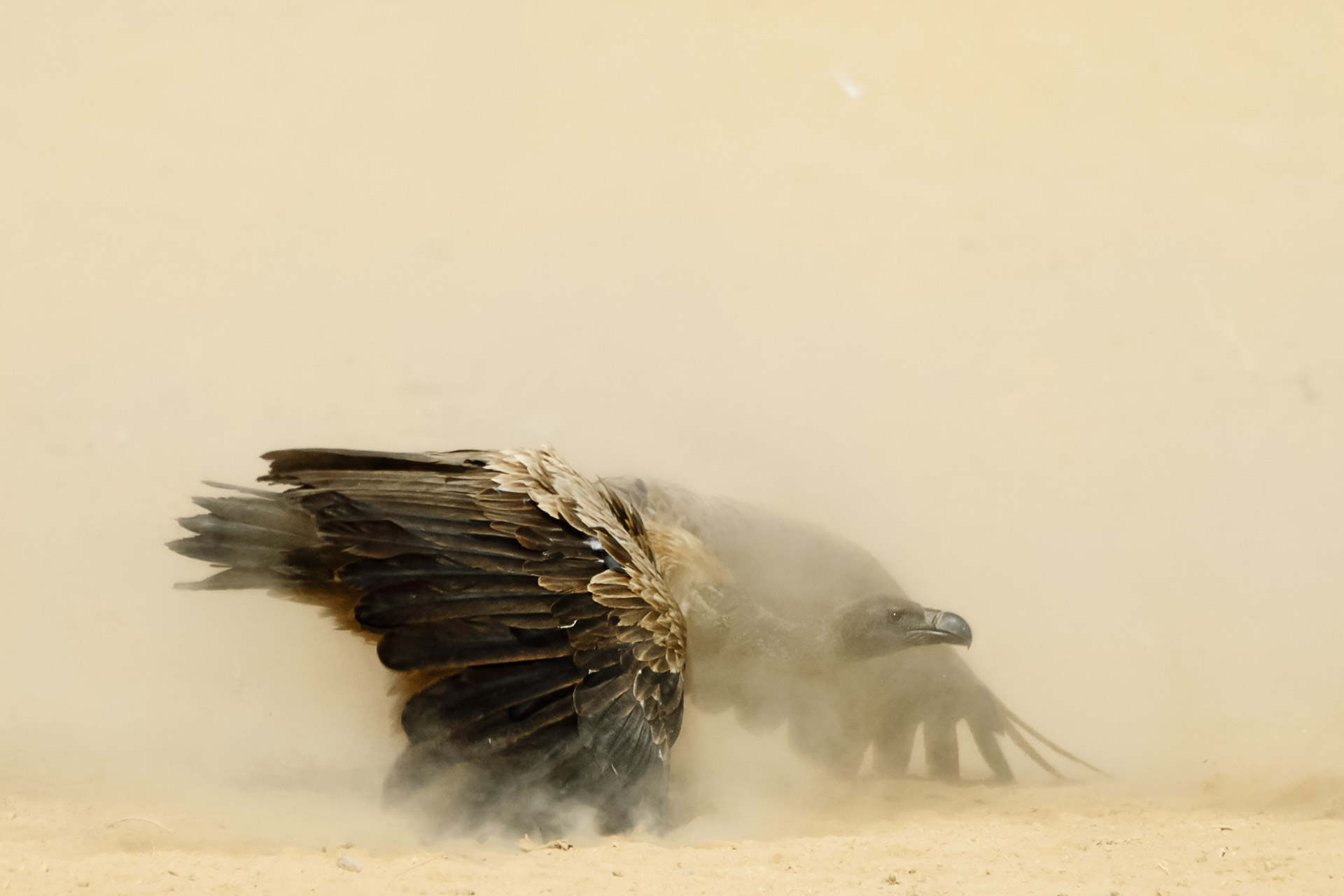
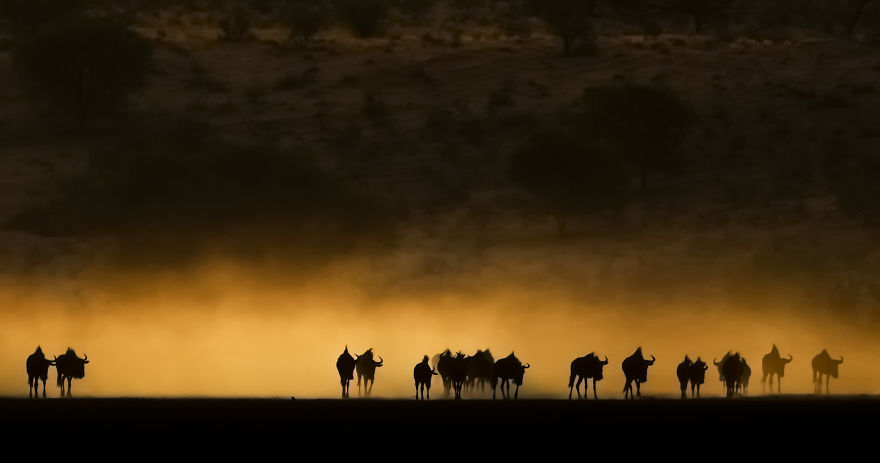
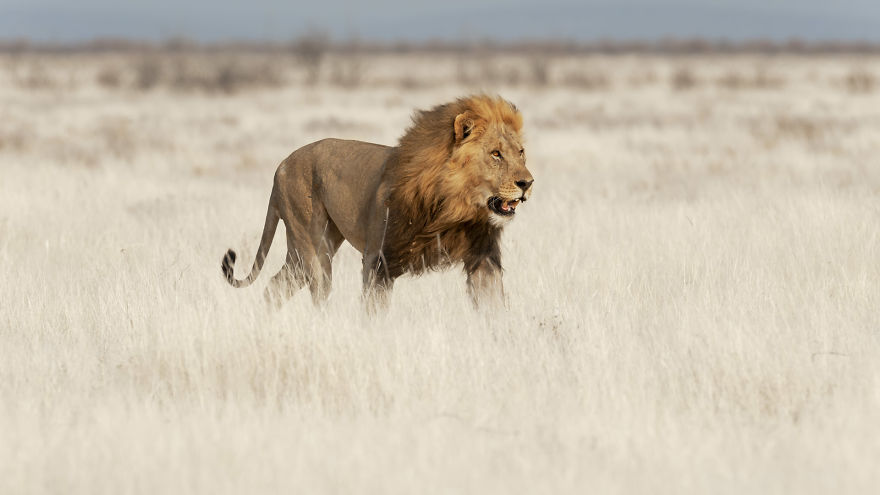
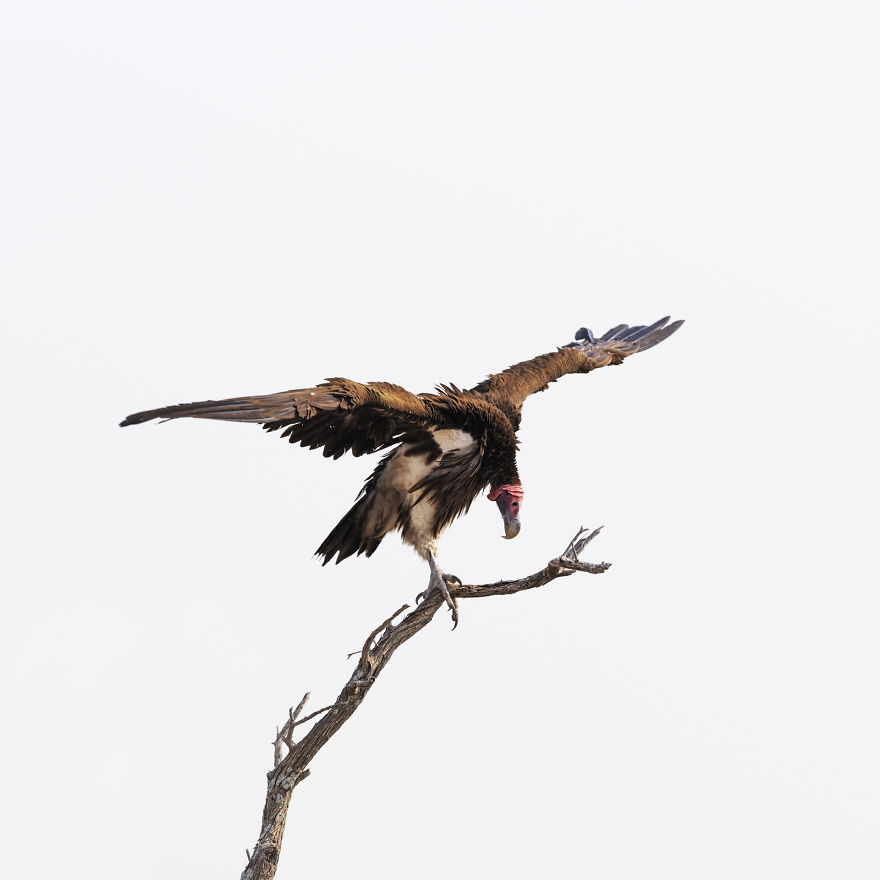
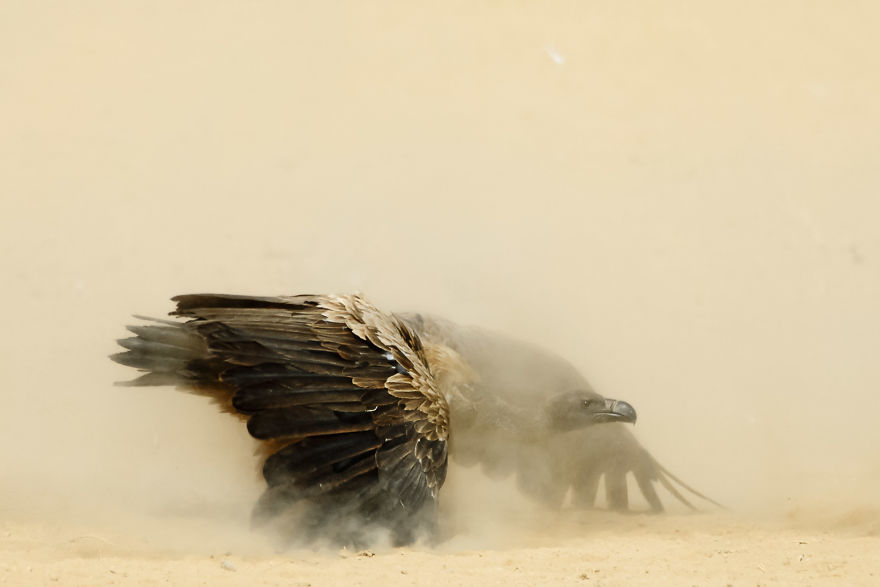




16
0